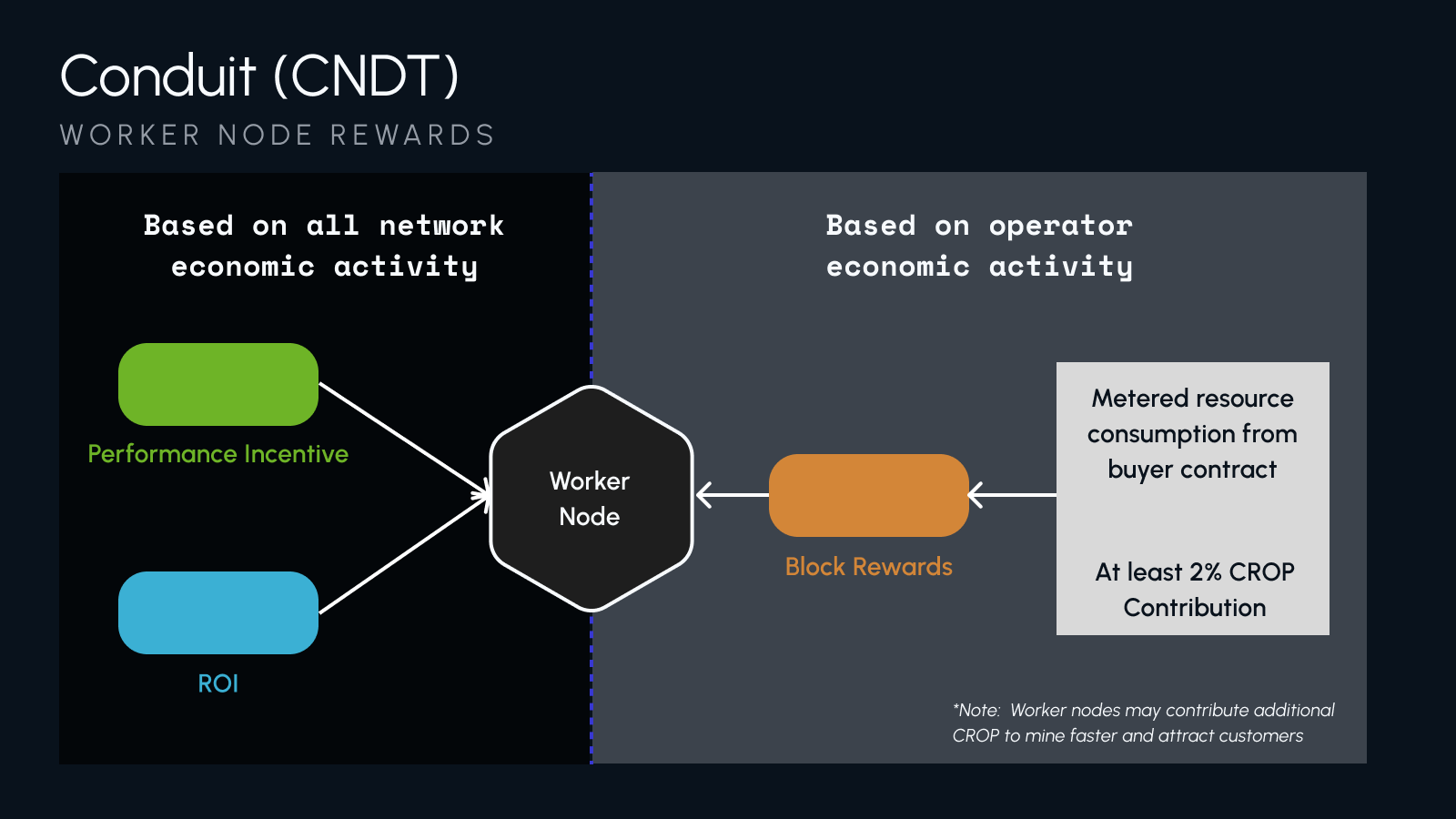Mining with a Node0 License (Worker Node)
Conduit Network supports running Worker Nodes with a Node0 License as a means to provide resources to the network and Mine CNDT.
Distribution Pool Rewards
The Distribution Pools that a Worker Node with an attached Node0 License can receive from are the Performance Incentive Pool and the ROI Pool. The Party that owns the Worker Node is entitled to allocations from the ROI Distribution Pool until the value used to acquire the Node0 License has been recouped. The Party that owns the Worker Node and attached Node0 License is also entitled to allocations from the Performance Incentive Pool, if they meet prescribed Conduit Network service requirements (up-time, bandwidth, resource availability, etc.).
Mining Block Rewards
Worker Nodes on the Conduit Network run Smart Meters that measure Resources which are sold as a good or service on the network. In the case of the Compute Module, the Resource being sold is the compute on the same device which is running the Worker Node OS and requisite Smart Meter; a similar scenario can be implemented on existing qualifying hardware. When the Party that owns and operates the Worker Node sells these resources to another Party on the network, they are required to contribute at least 2% of the transaction value in CROP. (Remember, the more CROP contributed by a Party, the more blocks they will Mine)
Notes about CROP Contributions
CROP contributions can be made by each of the Parties in a transaction (example: buyers and sellers). So in a $1000 transaction, the minimum 2% would be contributed by the seller, +$20 would be recognized in the seller CROP contribution ledger. If the buying Party also wanted to mine on the transaction, they may, recognizing the amount contributed in the buyer's CROP contribution ledger, up to the value of the transaction itself.
It is worth noting that a 2% CROP contribution is the minimum required by the network, but the Party that owns and operates the Worker Node may choose to increase this contribution to increase mining potential. (There may be circumstances where it is more lucrative to contribute the value earned in a sale as CROP than to keep the value itself.).
It may help to think about the seller CROP contribution as "gas" on a blockchain network, and the buyer CROP contribution as a "tip" on the transaction. Both of these activities qualify as Mining on the Conduit Network, and these contributions are tracked in the respective Party's CROP contribution ledger.
